Affiliate links on Android Authority may earn us a commission. Learn more.
The 9 best laptops at CES 2020
January 9, 2020
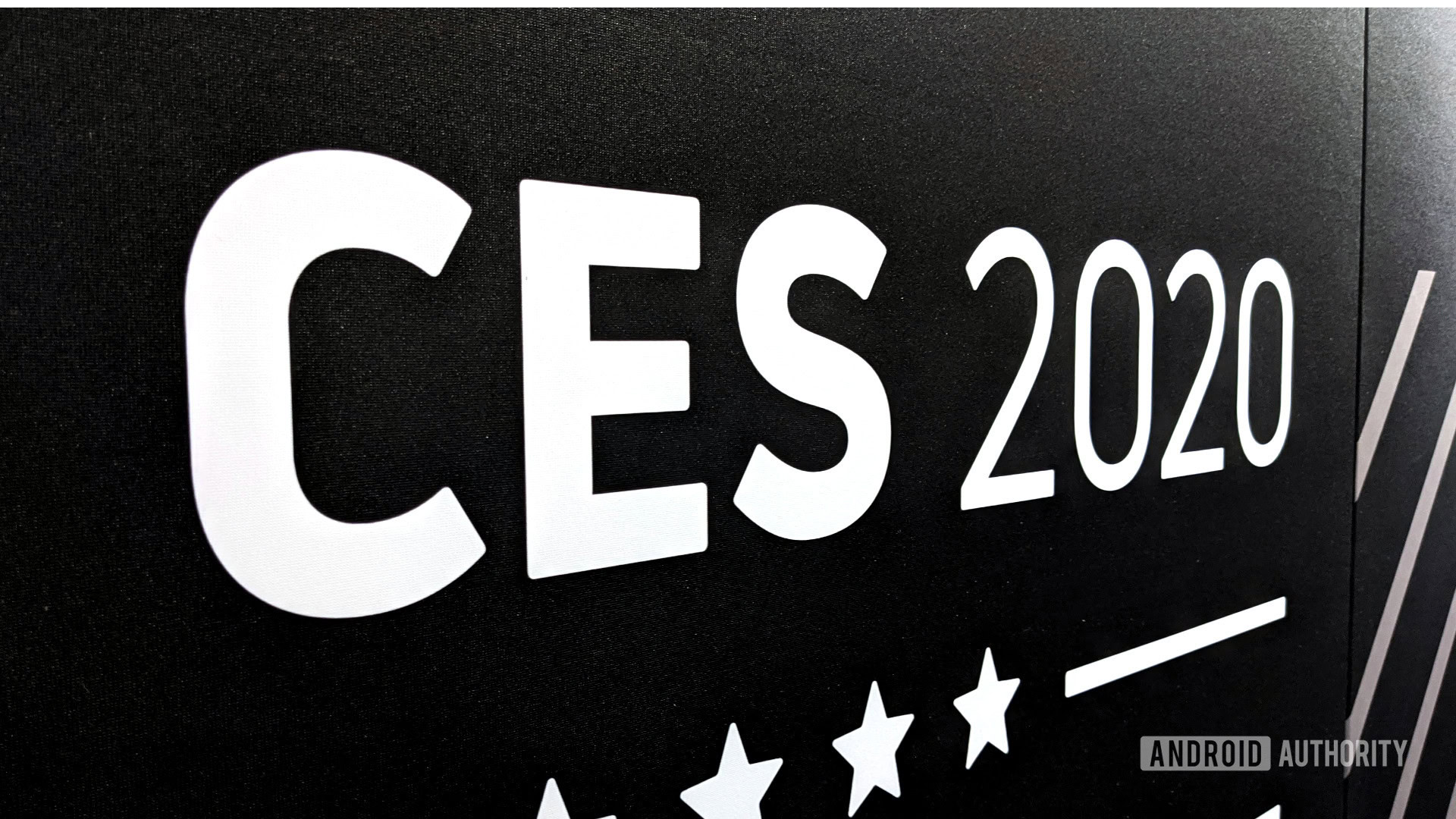
At CES 2020 new laptops tend to be a dime a dozen, but some certainly stand out more than others. We already took a look at our favorite Chromebooks, now it’s time to focus on our nine favorite Windows laptops at the show.
Lenovo Thinkpad X1 Fold
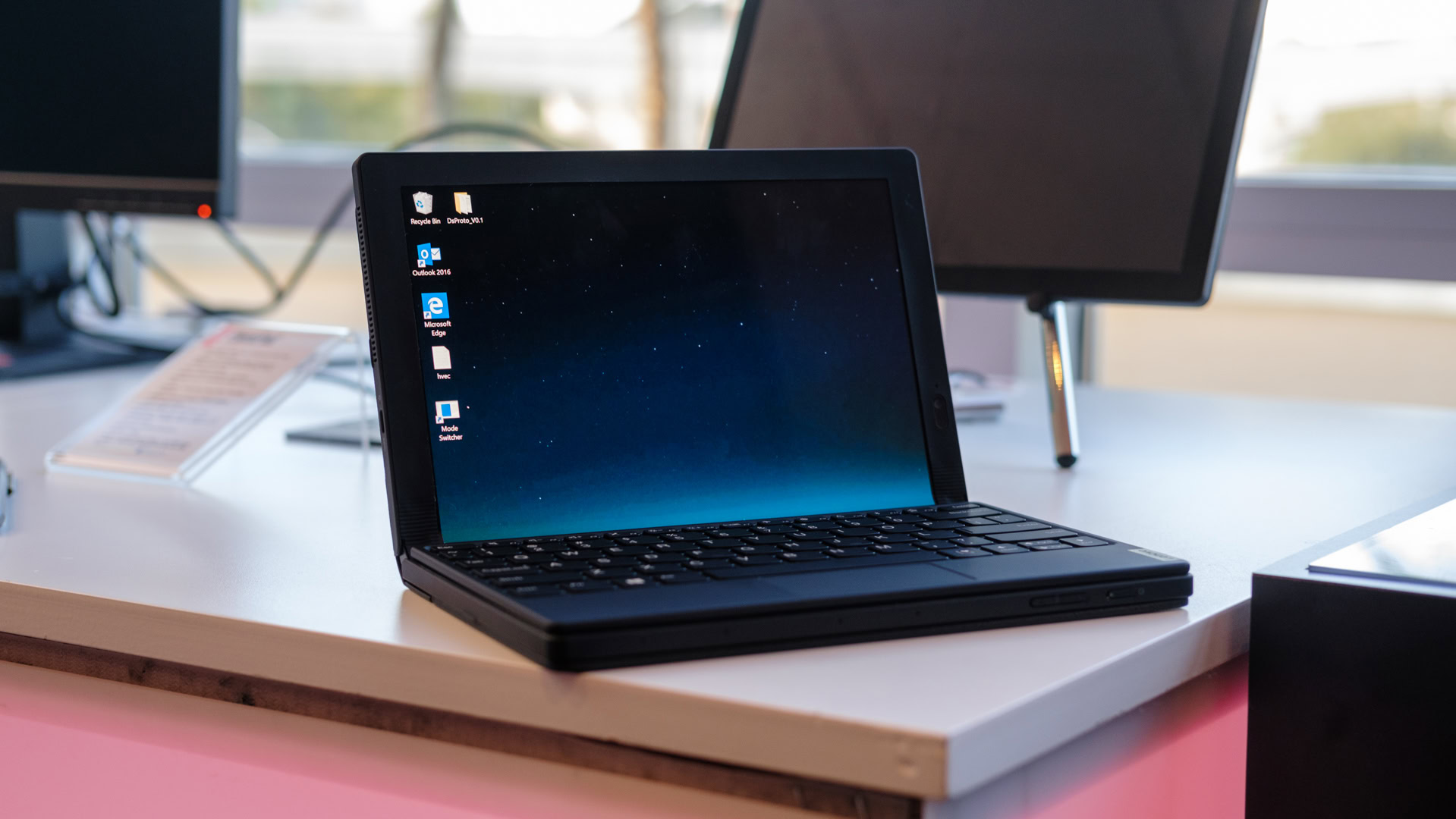
Foldable displays are still pretty rare, but we expect this to change dramatically over the next few years as more device makers embrace the technology. Lenovo previously announced a prototype/concept laptop with a foldable display, but at CES 2020 the Lenovo ThinkPad X1 Fold was formally announced.
When completely unfolded the X1 works as a 13.3-inch plastic OLED all-in-one computer, complete with a kickstand that keeps it propped up in the back. There’s also an included Bluetooth keyboard. When you want to make things more portable you can fold the X1 Fold in half, transforming it into a laptop. The keyboard can even attach to the bottom half of the screen via magnets, effectively giving you a normal laptop experience. For those wondering, yes, you can actually fold the X1 into a closed position without taking off the keyboard. The keyboard even wirelessly charges when it is attached.
The X1 Fold is also compatible with styluses, and Lenovo says it has reinforced the X1 with an aluminum back plating that should let you fold and unfold it while still putting as much (reasonable) pressure as you want on the display itself. The Lenovo ThinkPad X1 Fold will run Intel Hybrid technology and has 8GB of RAM, and starting at 256GB of storage. There’s no dedicated GPU, which is pretty expected for such a device.
Foldable displays aren’t cheap, and neither is the ThinkPad X1 Fold. The laptop starts about $2,499, which is expensive but not unreasonable, considering this is a laptop and yet only costs around $500 more than the Galaxy Fold.
Acer Concept D7 Ezel
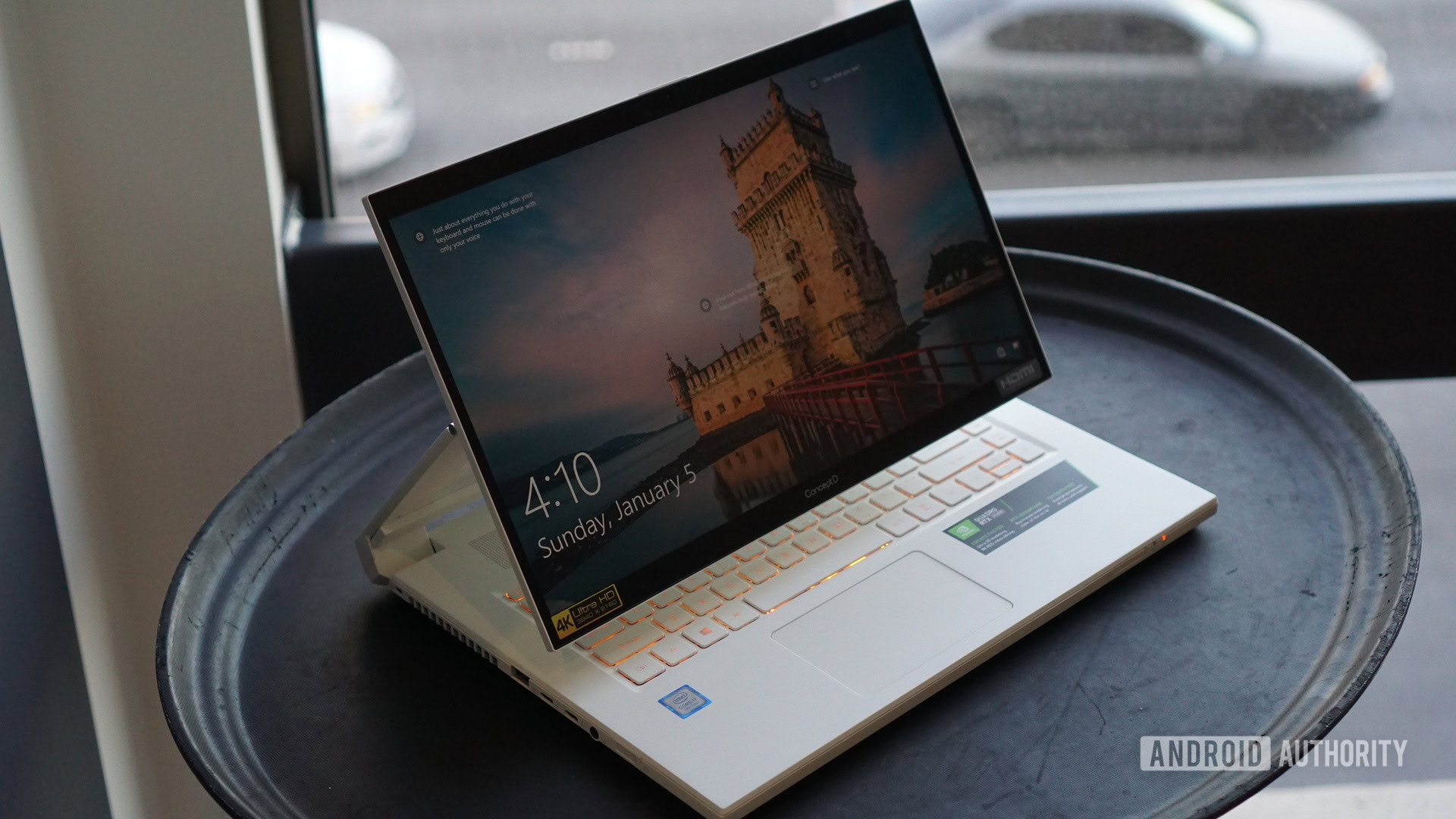
The Acer ConceptD 7 Ezel and Ezel Pro are designed for creators in mind, such as digital artists and architects. The laptop features a screen that can swivel for different usage cases. In addition to typical convertible viewing modes — like tablet, tent, and laptop views — you can also position the tablet portion upward so you can access the keyboard while still using the display as an easel. The tablet also includes a Wacom EMR digital pen designed for use on the 15.6-inch 4K IPS touchscreen display.
Under the hood, you’ll find a brand new 10th-gen Intel Core H-Series processor, NVIDIA RTX 2070 or 2080 graphics, up to 32GB of DDR memory, and storage up to a 2TB NVMe PCIe SSD. There’s a reasonable amount of ports too — two Thunderbolt 3 ports, an SD card slot, a DisplayPort 1.4 output, and an HDMI 2.0 port. The Pro model upgrades things a bit more, featuring the same design but jumping to an Intel Xeon processor, NVIDIA Quadro RTX graphics, ECC memory support, and it includes Windows 10 Pro.
The Acer ConceptD 7 will launch in North America and Europe, though there are no specifics on the exact timeframe. The laptop will start at $2,699, with the Pro variant starting at $3,099.
Dell XPS 13
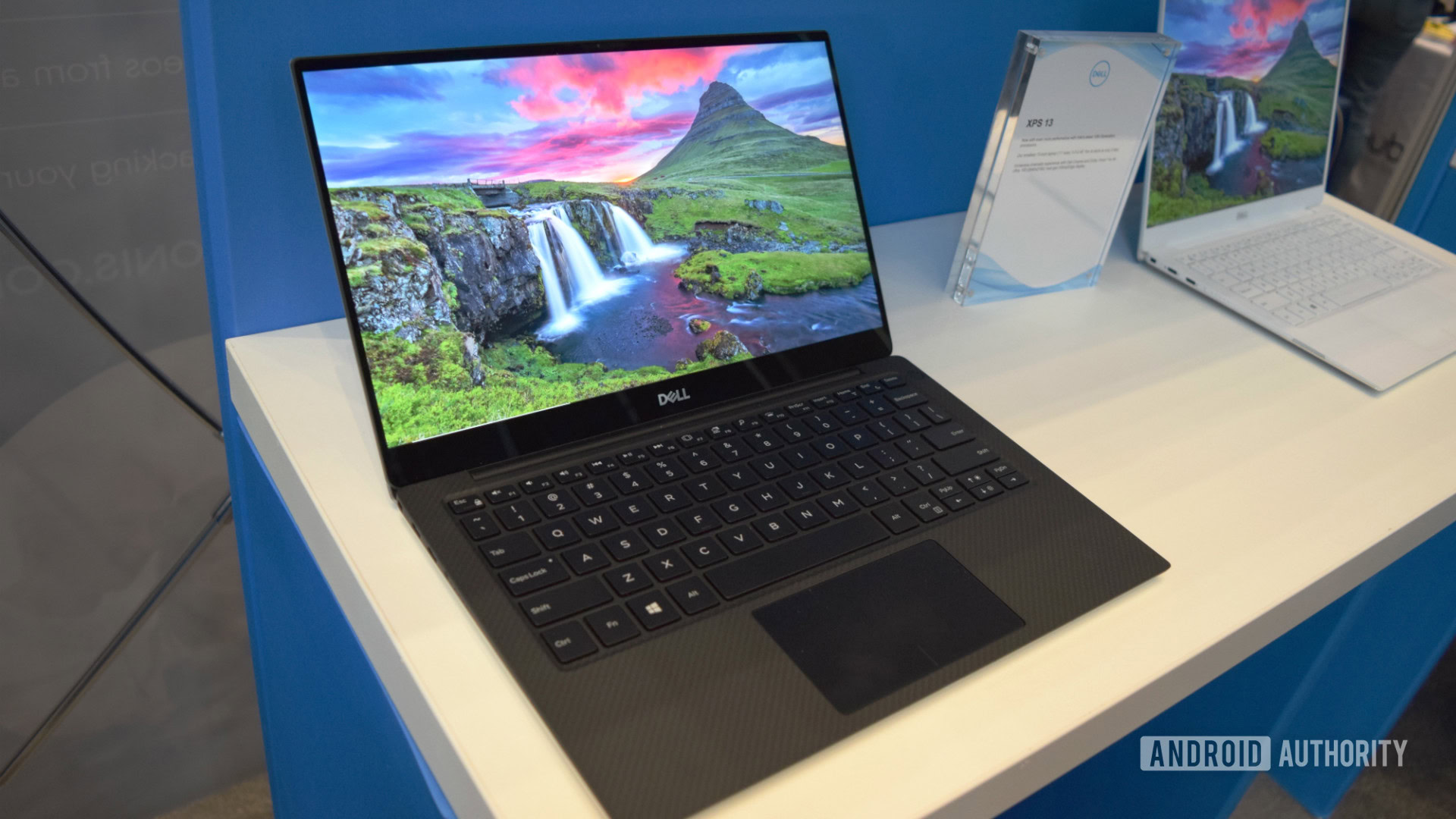
Dell’s XPS 13 series is extremely popular among consumers, and now it’s getting even better with the latest iteration. The new Dell XPS 13 9300 brings a new and refined design to the series, giving you a 13.4-inch display with a 16:10 aspect ratio in a body that’s more typical of an 11-inch laptop. The taller display also means that the bottom bezel is now completely gone.
Aside from a bigger display in a package that’s actually 2 percent smaller than the previous XPS 13, the new model also has a larger keyboard and trackpad.
Core specs for the machine include 10th gen Intel Core Icd Lake processors (i3/i5/i7), up to 32GB of RAM, up to 2GB SSD, and an option of Full HD or 4K displays. The 4K version only comes in a touchscreen configuration, but the Full HD model is offered in both touch and non-touch variants. There are no USB legacy ports, but you do get a pair of USB-C Thunderbolt 3 ports, a 3.5mm jack, and a microSD slot.
The new XPS 13 is actually available starting now for $999. A Linux-powered dev edition is also coming a bit later on February 4th, with the price starting at $1,119.
Dell Concept Ori
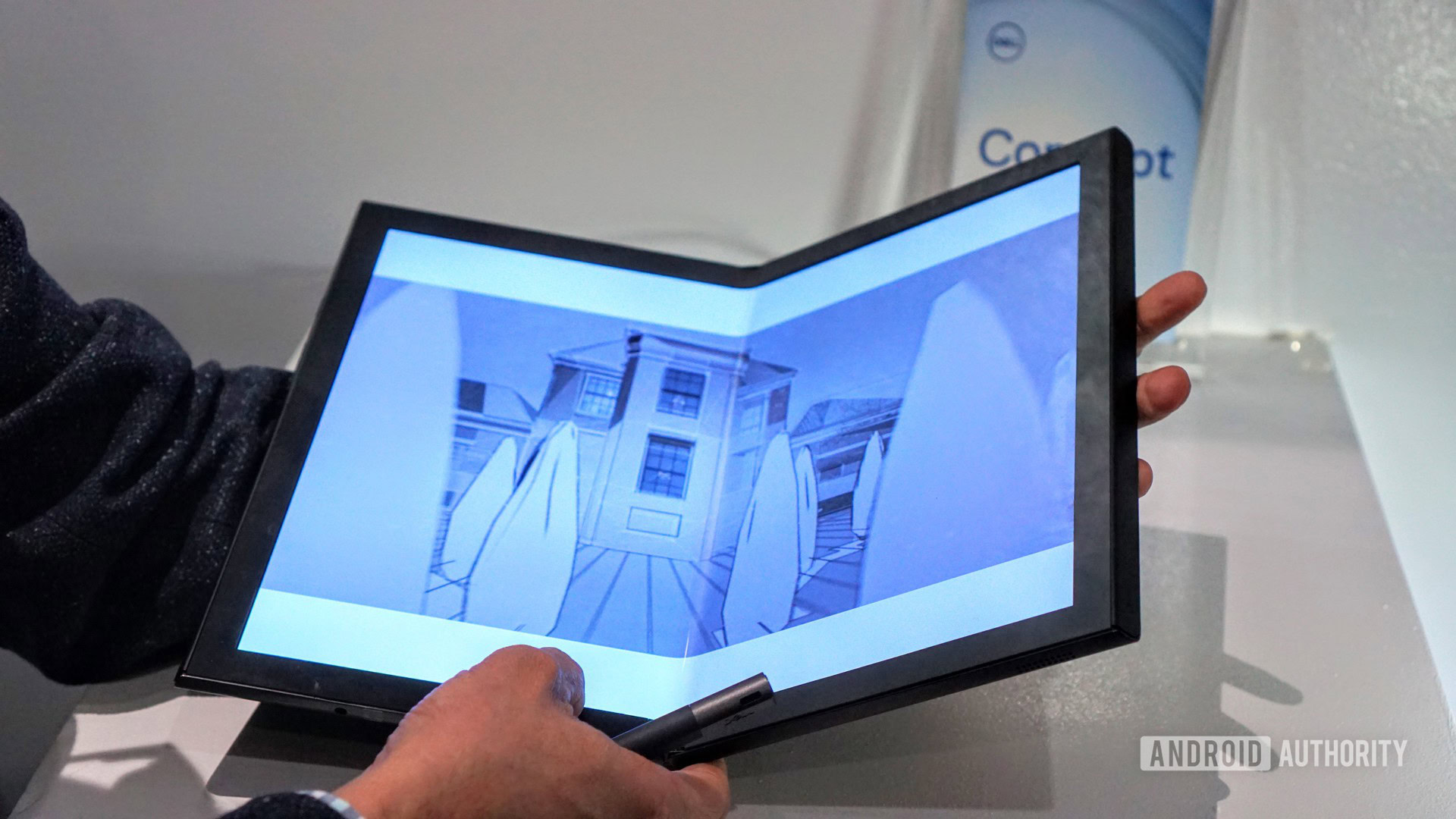
I’ll be honest, the Dell Concept Ori seems quite similar to Lenovo’s X1 Fold, other than the former is actually a commercial product. The foldable 13-inch QHD+ Ori tablet looks great and folds in half to look like sort of a book. There is a noticeable crease but I didn’t find it too distracting to look at.
Dell showed off a few different use cases for the Ori, similar to the Duet — such as using it as an ebook and for other multi-tasking functions. Unfortunately, it didn’t say anything about specs. There also doesn’t seem to be some kind of keyboard attachment just yet, making the design a little less practical than Lenovo’s upcoming foldable. Of course a keyboard accessory is probably a given for the Ori, if it ever becomes more than just a concept.
When I pressed Dell about plans they pretty much said it’s possible the tech could eventually make its way to the commercial side, but stayed firm that this particular product is “just a concept”. While the Ori isn’t much different from what we’re seeing from other foldable tablets, I’m still happy to see more laptop makers experimenting with the technology.
Dell Concept Duet
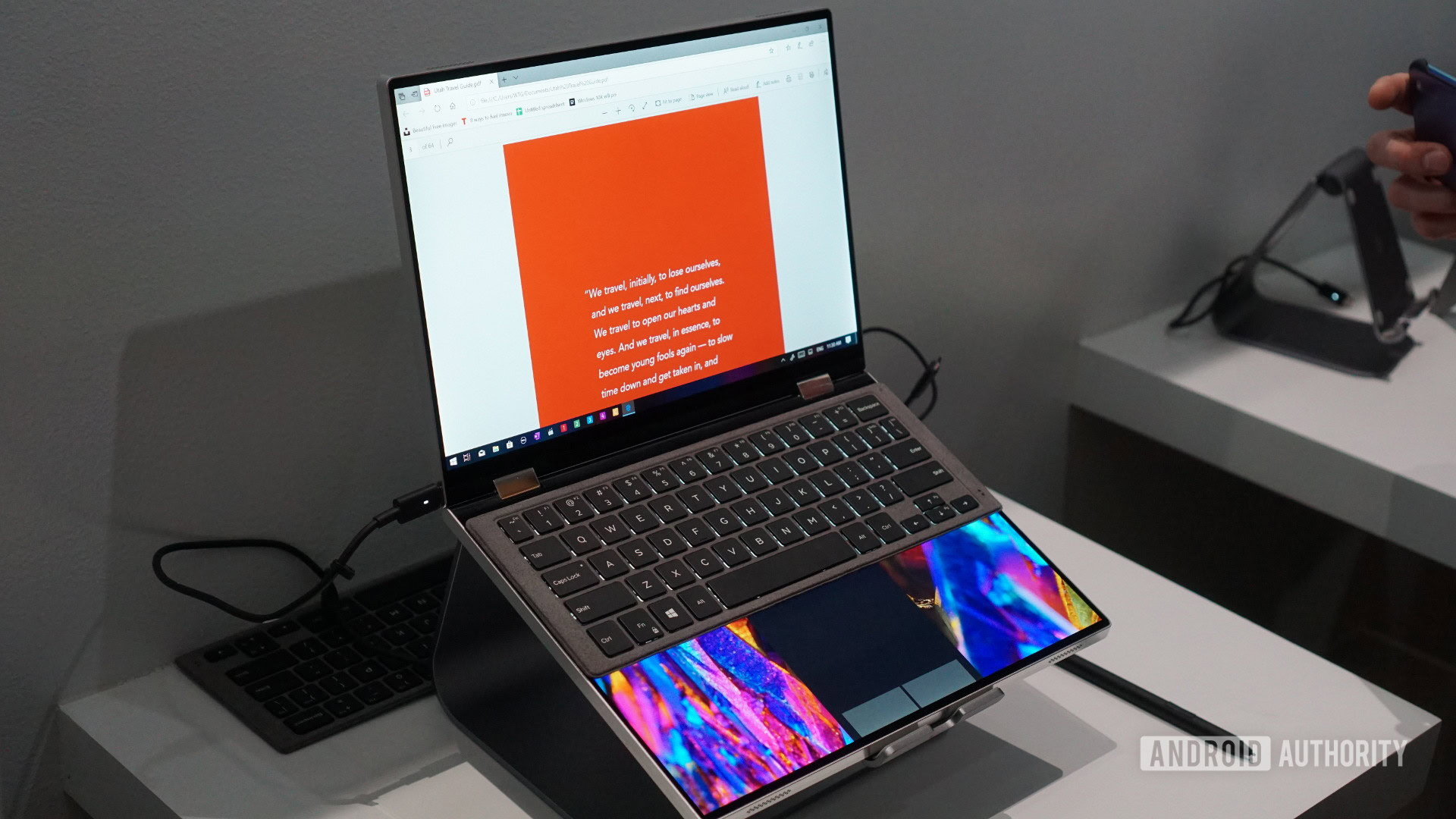
The Dell Concept Duet is very similar to Microsoft’s upcoming Surface Neo, only the former is still just a concept product and not necessarily something we can expect to come to market. The device looks a lot like a Dell XPS 13 2-in-1 on the outside, but on the inside the keyboard and touchpad have been replaced with a second screen. Both displays are 13.4-inch FHD panels.
Dell showed off a variety of different multitasking abilities to us, such as video conferencing on the main display while taking notes on the other (with an included stylus.) It also demonstrated the idea of using it as an ebook with each panel displaying a different page. While the Concept Duet has some unique use cases, a laptop just isn’t a laptop without a keyboard. Thankfully there’s a keyboard accessory that can be placed on top of the lower touchscreen. The accessory only takes up half of the space on the second display, with the rest of the space acting as touchpad.
Intel Horseshoe Bend prototype
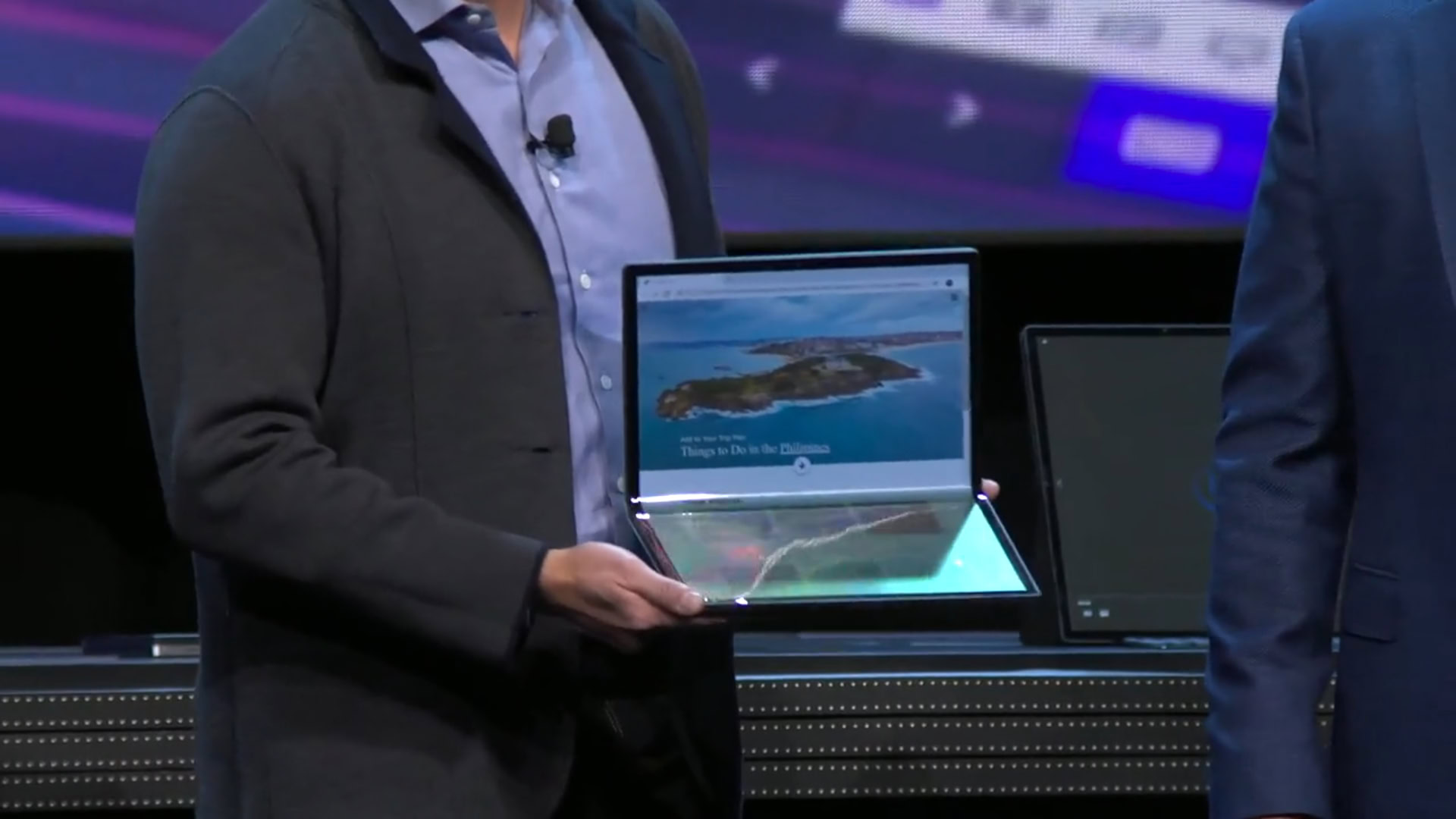
Foldable laptop/tablet devices seem to be a pretty big trend at CES this year, with even Intel getting into the game. The Horseshoe Bend is a concept device that is essentially a 17-inch monitor when unfolded. It even has a kickstand in the back, making it sort of an all-in-one desktop PC. The real trick is that it folds in half, allowing use cases like watching a video on one half of the screen while reading the article on the other half. The device is also powered by Intel’s upcoming Tiger Lake chip, though Intel didn’t give any real details about the specs of the processor.
The Horseshoe Bend doesn’t offer that much of different experience than other foldable laptops, though it’s larger size means it’s a much larger laptop when folded.
ASUS Rog Zephyrus G14
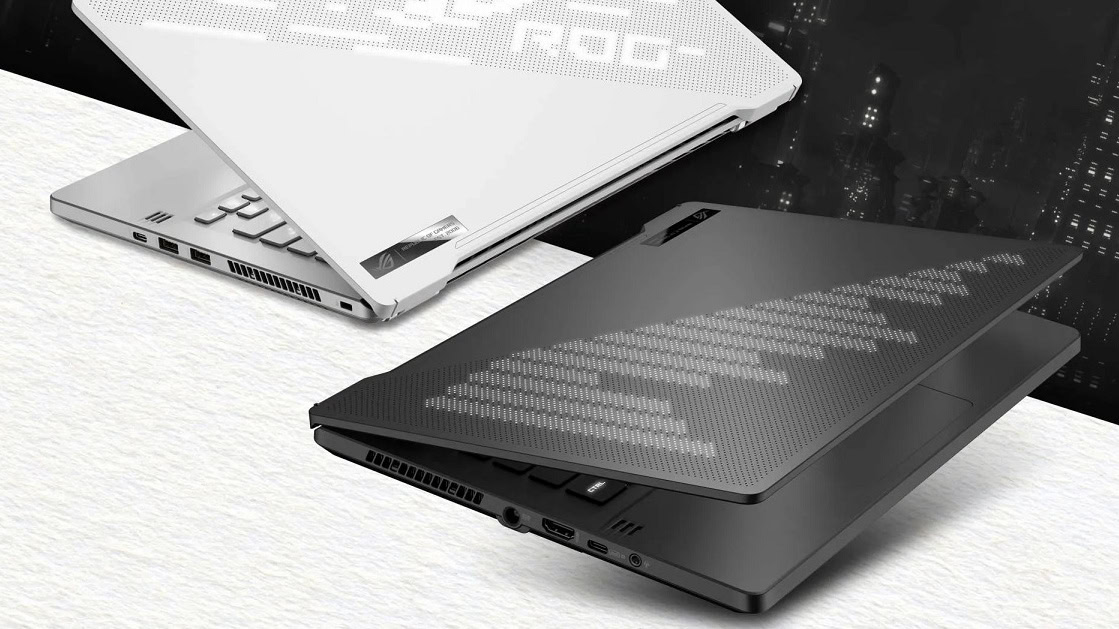
The ASUS ROG Zephyrus G14 gaming laptop packs a huge punch inside of a chassis that’s just 17.9mm thick and weighs a reasonable 3.5 pounds. The laptop also features some cool tech like an ErgoLift hinge that lifts the back of the machine when the lid is opened, providing better cooling. Even more impressive is the optional AniMe Matrix display which goes is found on the top of the laptop’s lid. It contains 1,215 mini LEDs that can be used to display text, animated GIF images and much more. It will definitely make it stand out among most any other gaming laptop.
Inside, the Zephyrus G14 even includes a special mobile CPU, created by AMD, that is supposed to create less heat than normal laptop gaming processors to accommodate its smaller chassis. However, the CPU still manages to put out a lot of performance for gaming and other tasks.
The Zephyrus G14 comes with a 14-inch FHD display at 60Hz, but you can also get one with a faster 120Hz refresh rate. Other key specs include support for up to an NVIDIA GeForce RTX 2060 GPU, along with up to 32GB of RAM and up to 1TB of SDD storage. In terms of ports, it has two USB-C ports, one of which includes DisplayPort and USB Power Delivery support. There are also two USB-A ports and an HDMI port. 2.0 port.
The ASUS ROG Zephyrus G14 will go on sale sometime in the first half of 2020. Pricing has yet to be revealed.
Lenovo ThinkBook Plus
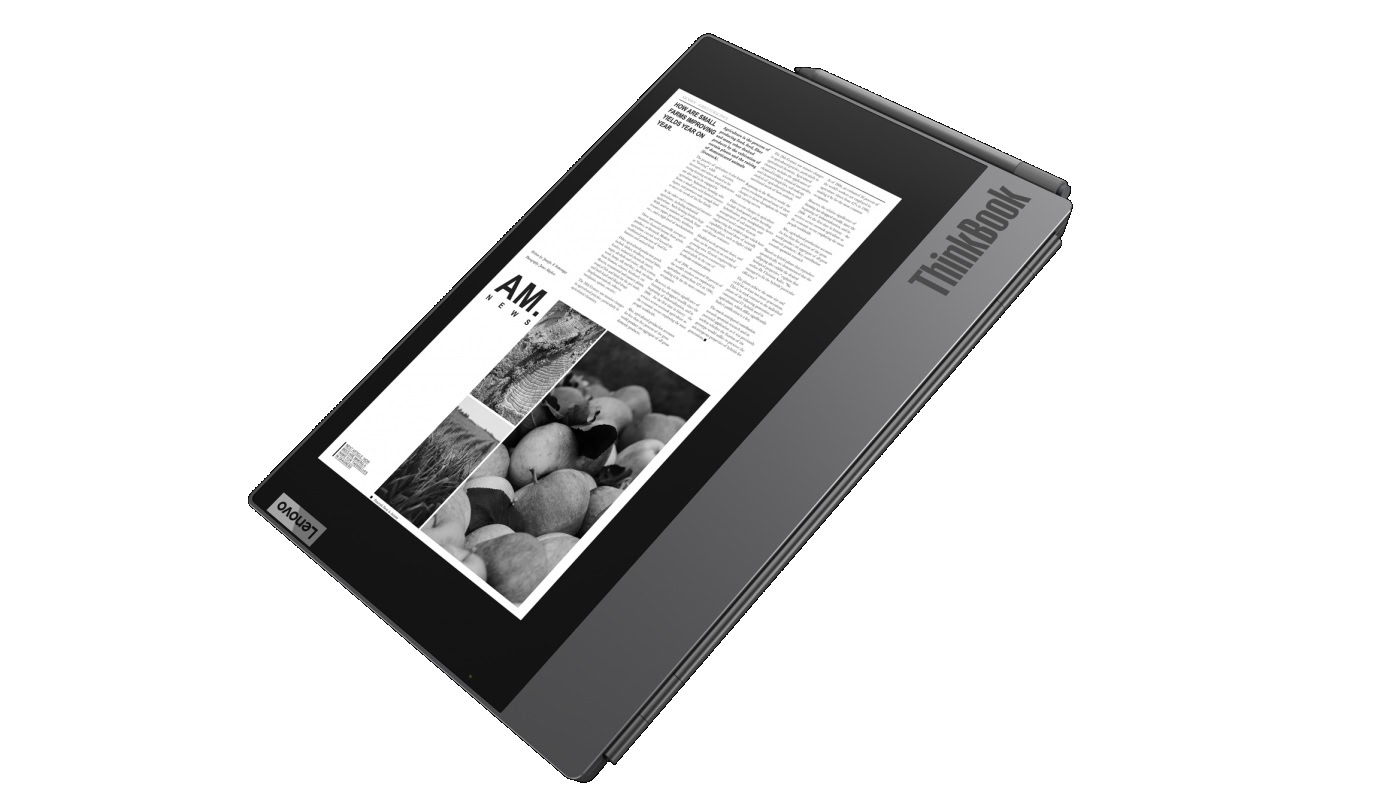
The Lenovo ThinkBook Plus looks like your everyday business laptop when it’s opened, but when it’s closed you can see the secondary 10.8-inch monochrome e-ink display that’s installed on the laptop’s lid.
The e-ink display can be used passively to check your calendar, the number of emails you have, and even read PDF files while the lid is closed. You can also write handwritten notes on the display with a pen or stylus. Those notes will automatically sync up to note-taking apps such as Microsoft OneNote. You can also read ebooks with the included Amazon Kindle app or make and receive calls with Skype.
The other hardware specs for the Lenovo ThinkBook Plus include a 13.3-inch main display when opened, along with an unnamed Intel 10th Gen Core i7 processor. You can get either 8GB or 16GB RAM and either 256GB or 512GB of onboard storage. The 3.1 pound notebook will also have a battery life of up to 10 hours and will have two USB-A ports, one USB-C port, and an HDMI 1.4 port.
The Lenovo ThinkBook Plus will go on sale sometime in March with prices starting at $1,199.
Samsung Galaxy Book Flex Alpha
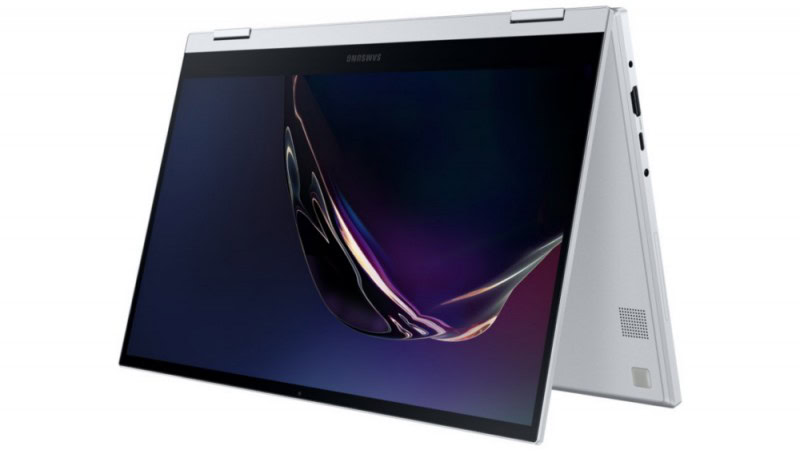
The latest in the Samsung Galaxy Book family, the Galaxy Book Flex Alpha offers relatively high-end specs at a fairly aggressive price. The laptop is a fairly standard 2-in-1 device, meaning it features a 360-degree hinge so it can function as both a laptop and a tablet. It’s also a relatively lightweight device, at just 2.6 pounds.
The Flex Alpha has a 13.3-inch QLED FHD display with a 1,920 x 1,080 resolution and is powered by an Intel 10th Gen Core processor. The notebook will support between 8GB and 12GB of RAM and either 256GB, 512GB or 1TB of SSD storage. Other specs include a battery with a life of 17.5 hours, a USB-C port, two USB-A ports, an HDMI port, and a microSD card slot for adding more storage. It will also come with a 720p camera.
The price for the Flexbook Alpha will start at $829.99 and is expected to launch in the US sometime in the first half of 2020.
Those are the best laptops we found at CES 2020. Have a favorite? Sound off in the comments below.